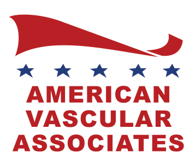How to Know When Venous Stenting Is Right For Your Patients
When it comes to your patients’ health, we know it’s your number one priority as a qualified physician to ensure that they are provided with the treatment best suited to their needs. Especially when it comes to blood clots, it can be crucial to evaluate all of the options to prevent deep vein thrombosis (DVT) from worsening and posing a potential danger.
That’s where venous stenting comes in. Knowing when your patients might require more than just anticoagulants or thrombolytics to prevent or dissolve blood clots could become vital as you continue your practice.
So, here’s what you need to know when considering venous stenting:
When to Turn to Venous Stenting
While you probably already know what a venous stent is, knowing when your patient might need one is just as important, if not more.
“The majority of patients presenting with venous thromboembolism (VTE) receive treatment with anticoagulation to prevent thrombus extension and embolization in order to reduce morbidity and mortality,” according to the American Society of Hematology (ASH) “However, up to 20% to 50% of patients develop PTS as a consequence of DVT despite anticoagulation.”
Nonetheless, while preventative methods are essential, thrombolysis or a balloon angioplasty without a stent might not be enough to prevent post-thrombotic syndrome (PTS) or clear any blood clots still present.
Thus, if there are residual venous obstructions, a venous stent might be helpful to resume normal blood flow.
Making Stenting a Part of Your Practice
Patients may be hesitant when you mention procedures unfamiliar to them. This is why it’s important that you feel confident choosing a treatment that will ensure a high success rate and keep patients feeling at ease during a potentially stressful operation.
According to a recent study focused on the clinical outcomes of venous stenting, after one year of stent placement, the primary patency rate was 93.8%. As a result, the procedure led to improved outcomes for patients with venous obstructions caused by various venous diseases.
In addition, considering that the procedure is minimally invasive and persistent pain is rare after vein stenting, the operation can be performed in an office-based lab, or OBL, to provide a more cost-effective and efficient treatment method.
Implementing an OBL can offer comfortable outpatient care while also allowing you to have autonomy over your medical procedures, such as venous stenting, resulting in higher reimbursements for your practice.
Leave Your Practice in Our Hands
Maybe you’re thinking about the benefits of an OBL, and you’re ready to start managing your practice more efficiently.
That’s where American Vascular Associates comes in!
With proprietary state-of-the-art software, oversight of appointment scheduling, physician credentialing, and over 100 more center management services, you will be sure to improve your practice and patient care.
We also offer marketing services and revenue cycle management to ensure your business thrives with improved office efficiency and enhanced patient experiences.
If you have further questions or are looking to join our network, don’t hesitate to contact our corporate office at 877-685-3281 today. Make your patients a priority and let American Vascular Associates handle the burden of business management with ease!




